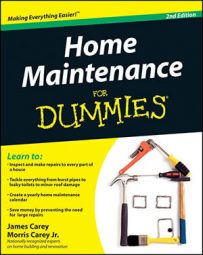Few home-maintenance projects are easier than sealing an asphalt driveway. Mostly you need a strong back to maneuver the big, heavy buckets of sealer. When you’ve gathered everything you need, follow these steps to fill even large cracks in your asphalt drive:
Using a putty knife, remove debris from any large cracks and then sweep the entire surface with a push broom.
Before you begin, check the weather forecast to make sure the temperature will stay above 50 degrees and there’ll be no rain for the next 36 hours. Cool temperatures and excessive moisture interfere with adhesion and drying.
Fill all cracks more than 1/4 inch wide with asphalt caulk.
You need to use asphalt patching material to patch bigger cracks. Smaller cracks can be filled by the sealer.
Prepare the surface by spraying it with water to remove any dust.
It is also a perfect time to clean any oil spots.
Allow the driveway to fully dry and get the sealer ready.
Drag the big, heavy buckets of sealer onto the driveway. Without opening them, flip them upside-down to allow the heavier goop to sink toward the top; then flip them back, crack them open, and stir thoroughly with a sturdy, clean stick. Put the lid back on the now-stirred sealer and drag one of the big, heavy buckets of sealer to your starting point.
Pour out only as much sealer as will coat about 20 square feet (you’ll figure out how much that is pretty quickly); then use a roller or squeegee to spread the coating across the driveway using overlapping strokes.
Stir the sealer as you apply it to ensure its consistency. A thick coat is not better than a thin coat.
Keep dragging the big, heavy buckets around and doing 20 square feet at a time until you’re done.
Be careful not to slop sealer onto the sidewalk or street.
Let the sealer dry for at least 24 hours, and preferably 48 hours.
During the drying time, stay off the driveway. Put the empty buckets at the end of the driveway to prevent visitors from driving on your freshly coated and very, very handsome driveway.

